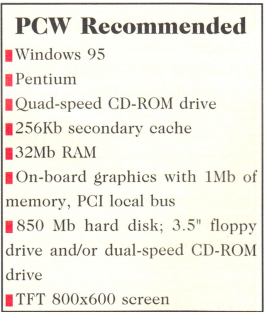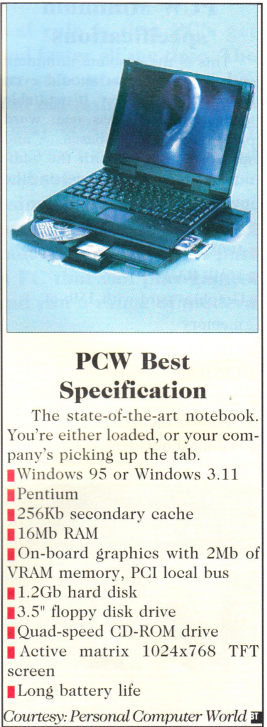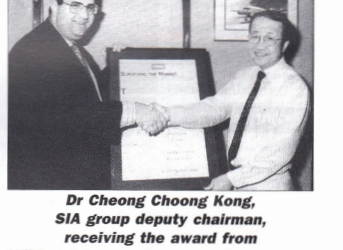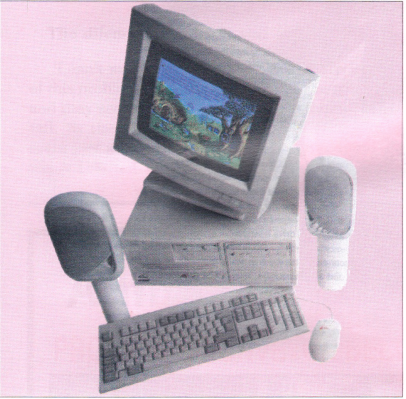
The one universal rule is that PC’s get cheaper, better and faster all the time. The result is that your state-of-art PC can become outdated and old-fashioned in a couple of years. It may still work perfectly well, but probably won’t run very fast and won’t run the latest software. If you’re just planning to do simple word processing, this may not matter. But we’re assuming here that you want to buy a general purpose multimedia PC that can play games, use CD-ROMS and run a range of modern software.
Buying Don’ts
- Don’t buy a machine with less than 16Mb of memory if you plan to run Windows 95.
- Avoid cheap 14″ monitors.
- Bundled 14.400 modems are not the bargain they seem. Opt instead for a 28,800 modem.
Buying Do’s
- You can never have too much disk space.
- Spend extra cash on buying the next largest hard disk space.
- Make sure that Pentium motherboards have an intel Triton chipset.
- Check the warranty. Is it for on- site or back-to-base repairs? If it’s on-site, does the manufacturer of fer guaranteed response times
- Check the technical support. Is it free? Is it easy to contact?
- If you’re buying the PC for home use, you’ll probably want full multimedia capabilities to enable you to use CD-ROM games and edutainment products and play video clips. This should include at least a 16-bit Sound Blaster-compatible soundcard and speakers.
- Think about upgrading your memory immediately. RAM prices are low at the moment-you can pick up 16Mb of EDO RAM for about 100% or less if you want to do your own upgrading. It is also the quickest way to improve the performance of your machine, of- ten more so than upgrading your processor.
- Look at the software bundle. If you want an office suite it is far cheaper to buy it as part of the bundle; larger manufacturers can offer MS Office, for example, at about a third of the RRP. Multimedia CD-ROM bundles will not include the UK version of Encarta ’96 -Microsoft will only allow the US version to be bundled.
Other things to consider
PC’s have become more similar in the last few years. The days when smallish computer companies designed their own chipsets (the chips that assist the main processor) are long gone. Most small box shifters buy their motherboards from Taiwanese manufacturers. Larger companies either design their motherboards themselves (Apricot, Compaq, IBM) or get motherboards built by other companies to their specifications (Gateway).
Most manufacturers now use Intel Triton 2 chipsets: either 430HX or 430VX. The HX chipset is reck oned to be better for office applications and is optimized to work well with large arrays of EDO RAM. The VX chipset works best with multimedia applications and SDRAM.
Cyrix chips are worth considering. Their 6×86 chips, such as the P133+, are often cheaper and give better performance than their Intel counterparts.
If you are serious about multimedia, it may be worth upgrading your soundcard to a 16-bit wavetable card. A six-speed CD- ROM drive will give you a noticeable performance gain over a quad-speed, but the speed increase of an eight speed over a six-speed is less tangible. Remember that, unlike your hi-fi setup, good speakers are powered from the mains, not from your PC.
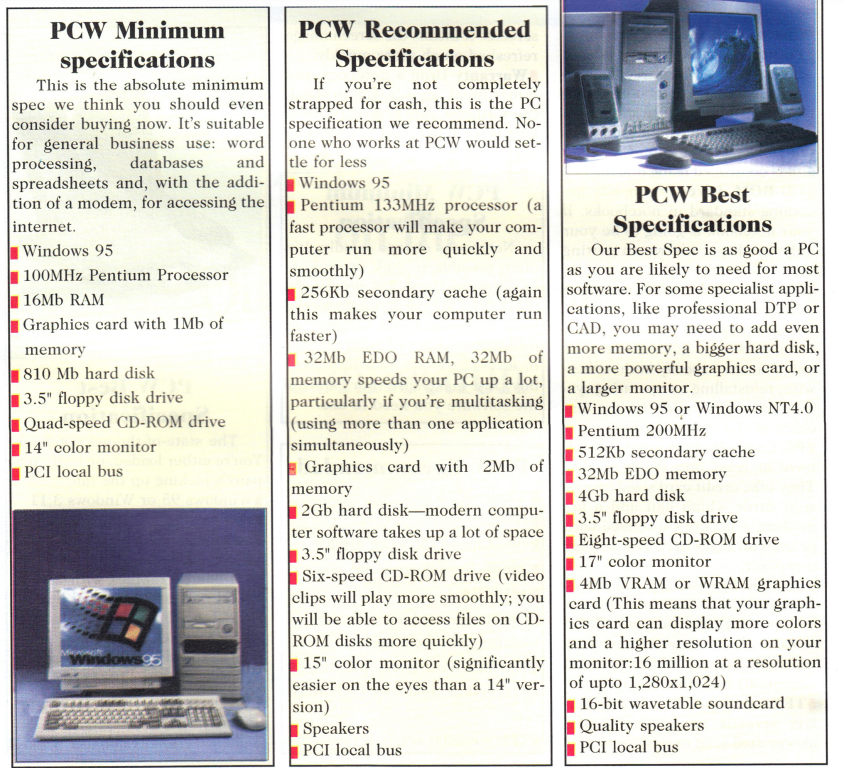
Buying a Notebook
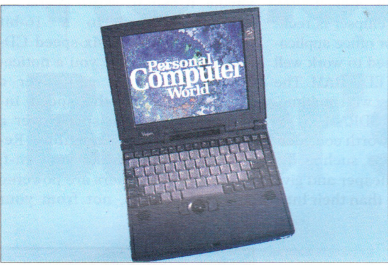
Notebooks are one area in which it’s of ten safer to stick to brand names. Not that some of the Far Eastern kit doesn’t work perfectly well, but reliability seems to be a problem and it can be fiendishly difficult to obtain spares. A useful guideline when choosing a notebook is: try before you buy.
Remember that standard notebook specifications are generally a step or two behind the desktop equivalents.
What to look for in a notebook
- Pointing Device There’s been a wholesale move from trackballs to trackpads. Some notebooks, notably IBM Thinkpads, use stick technology (a device which looks like the rubber on the top of a pencil and is controlled using one finger.)
- CD-ROM drives are rapidly becoming standard in notebooks. If your notebook is going to be your only machine, it’s worth getting one.
- Floppy disk drive Often there is a choice between a CD-ROM drive and a floppy disk drive. Again, if the notebook is going to be your only machine, specify both. Otherwise, reinstalling an operating system can mean returning the machine to the manufacturer.
- PC Cards Modern notebooks all have at least one PC card slot. They take credit card sized expansion cards which can add a fax modem, a network interface card or even an extra hard disk to your computer.
- TFT screens TFT or active matrix screens are replacing the slower dual scan or passive matrix screens. It means the screen image refreshed much more quickly.
- Warranty Drop a notebook and it may break, so it is vital to check the terms of your warranty. How long is it? What level of service is provided?
PCW Minimum Specification
Notebooks change rapidly. It’s often possible to pick up end-of- line machines with 486 processors from brand-name manufacturers such as Toshiba and Compaq at discounted prices of 1000 pounds or less. These can be a very good buy. Just make sure they can run the software you need to use.
